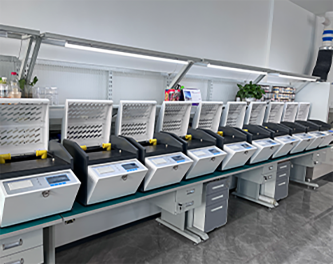 English
English


Advanced Techniques in Gas Chromatography and Mass Spectrometry for Chemical Analysis
Gas Chromatograph Mass Spectrometer (GC-MS) An Indispensable Analytical Tool
In the field of analytical chemistry, the Gas Chromatograph Mass Spectrometer (GC-MS) stands out as an indispensable tool, utilized for the qualitative and quantitative analysis of complex mixtures. This powerful instrument combines two techniques—gas chromatography (GC) and mass spectrometry (MS)—to provide comprehensive information about the components present in a sample, making it essential across various industries, including pharmaceuticals, environmental monitoring, and food safety.
Principles of Operation
At its core, GC-MS operates in two distinct phases. First, the gas chromatography phase separates the volatile components of a sample. The sample is injected into a heated injection port where it is vaporized. This vapor then enters the chromatographic column, where it moves through a stationary phase, typically a coated capillary tube. As the sample travels through the column, different components interact with the stationary phase to varying degrees, resulting in separation based on their boiling points and polarities. The time it takes for each component to exit the column, known as the retention time, is a critical factor for identification.
Once the separation is complete, the components are directed into the mass spectrometer. Here, they are ionized, typically by electron impact or chemical ionization. As the ions are formed, they are accelerated into a mass analyzer that segregates the ions based on their mass-to-charge ratio (m/z). This results in a mass spectrum that serves as a unique fingerprint for each component, allowing for their identification and quantification.
Applications of GC-MS
GC-MS is widely utilized across numerous fields due to its versatility and sensitivity. In the pharmaceutical industry, it is employed for drug testing, formulation analysis, and stability testing. The ability to detect trace amounts of active pharmaceutical ingredients (APIs) and their metabolites makes GC-MS invaluable for quality control and regulatory compliance.
gas chromatograph mass spectrometer gc ms

Environmental monitoring is another significant application. GC-MS can identify pollutants in air, soil, and water samples, making it crucial for environmental assessments and compliance with regulatory standards. From detecting volatile organic compounds (VOCs) in urban air studies to analyzing pesticide residues in soil samples, this technique plays a vital role in ensuring environmental safety and health.
In the food industry, GC-MS is instrumental in flavor and fragrance analysis, as well as in detecting contaminants and ensuring food safety. The method can identify essential oils, additives, and pesticide residues in food products, ensuring compliance with food safety regulations.
Advantages and Limitations
One of the key advantages of GC-MS is its high sensitivity, allowing for the detection of compounds at very low concentrations, often in the parts per trillion (ppt) range. Its ability to provide both qualitative and quantitative data in a single run makes it a powerful analytical technique. Moreover, the extensive libraries available for mass spectral data enable the identification of numerous compounds based on their unique mass spectra, facilitating rapid analysis.
However, GC-MS is not without its limitations. The technique is primarily suited for volatile and semi-volatile compounds, which means that polar or thermally unstable compounds may not be efficiently analyzed. Sample preparation can also be complex, requiring careful consideration to avoid contamination or loss of analytes. Furthermore, the requirement for a gas phase means that non-volatile substances, such as some biomolecules, cannot be analyzed directly without derivatization, adding an extra step to the analytical process.
Conclusion
In conclusion, the Gas Chromatograph Mass Spectrometer (GC-MS) is a vital tool in modern analytical chemistry. With its ability to separate and identify complex mixtures with high sensitivity, it has evolved into an essential technique for various applications, from pharmaceuticals to environmental monitoring and food safety. While it has its limitations, the benefits it offers far outweigh them, making GC-MS a cornerstone of analytical practices in today's scientific landscape. As technology continues to advance, the capabilities and applications of GC-MS are likely to expand, further solidifying its role as a key analytical instrument in the quest for precision and accuracy in chemical analysis.
-
Differences between open cup flash point tester and closed cup flash point testerNewsOct.31,2024
-
The Reliable Load Tap ChangerNewsOct.23,2024
-
The Essential Guide to Hipot TestersNewsOct.23,2024
-
The Digital Insulation TesterNewsOct.23,2024
-
The Best Earth Loop Impedance Tester for SaleNewsOct.23,2024
-
Tan Delta Tester--The Essential Tool for Electrical Insulation TestingNewsOct.23,2024





